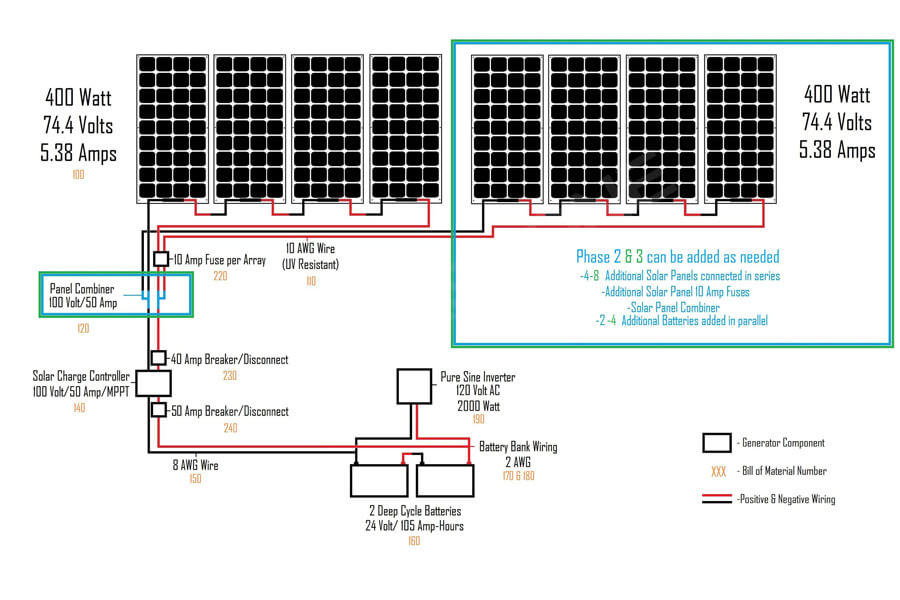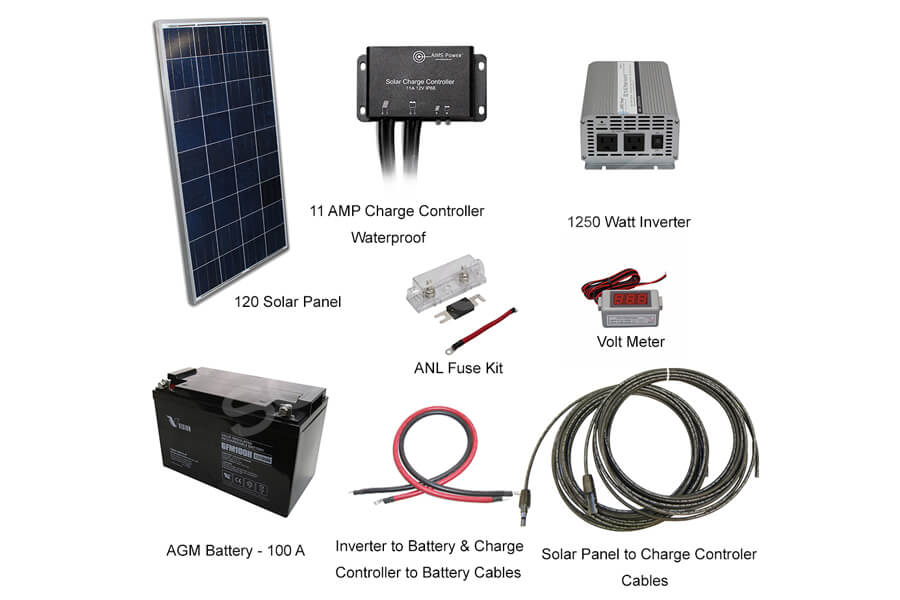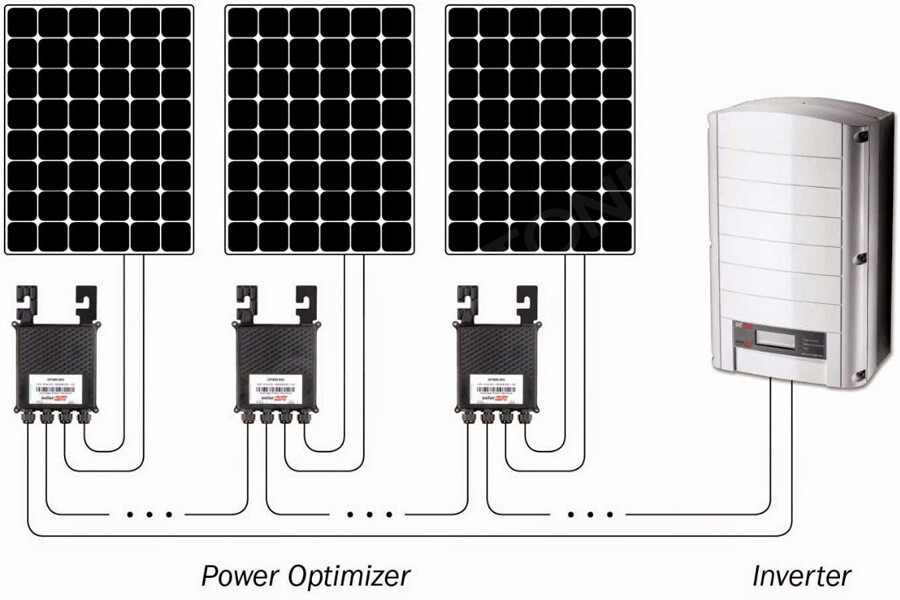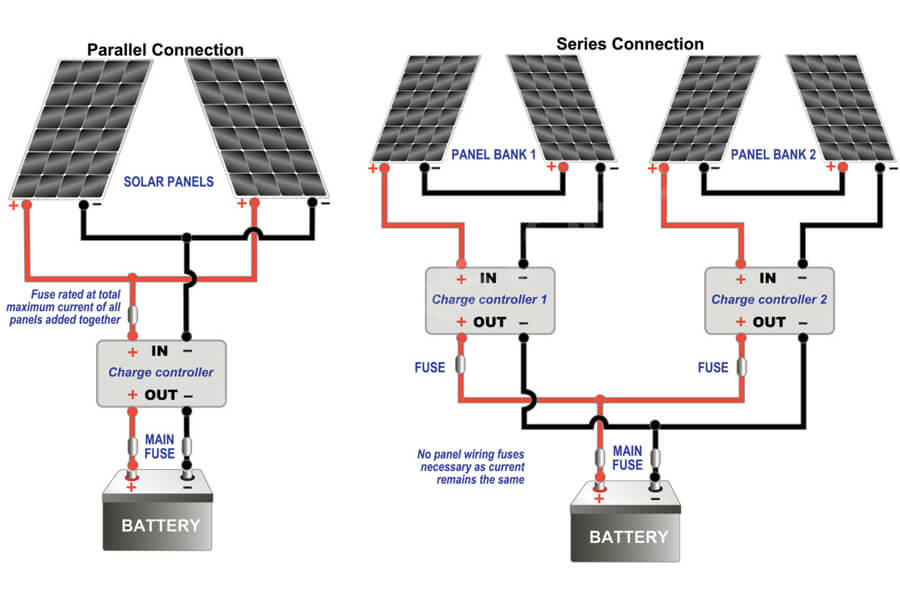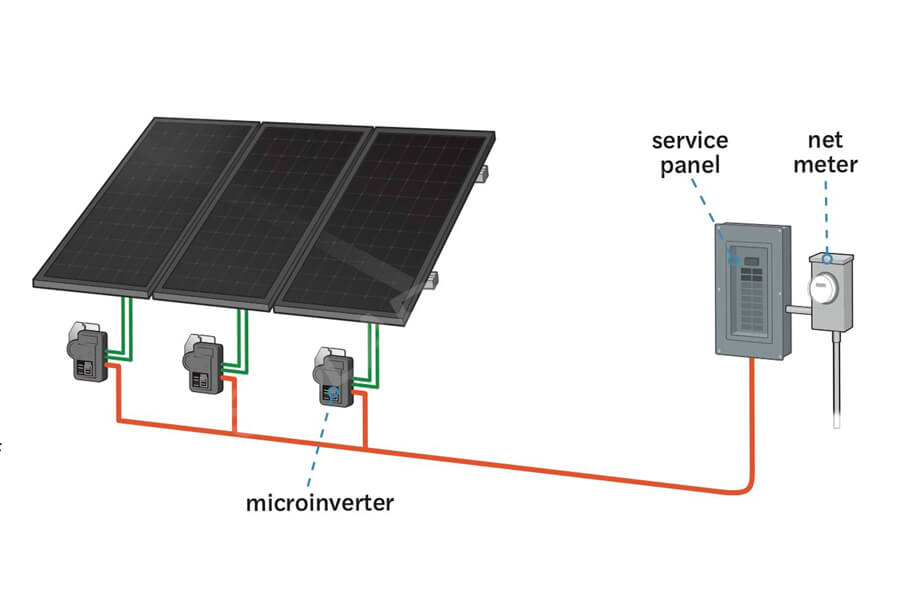Connection method of photovoltaic modules
Series connection:
The solar panel has a positive and negative electrode. Series connection of solar panels refers to connecting the positive pole of a module to the next negative pole, and so on. This type of wiring increases the output voltage.
Parallel connection:
Parallel connection of solar panels increases the output current while maintaining a constant voltage. The output current is the sum of all the currents generated by the modules in the series.
Parallel solar panels must also comply with NEC regulations. This includes conductor size and overcurrent devices. This is calculated by increasing the short-circuit current (Isc) by 125%, taking into account the number of modules in the system, as specified in NEC 690.8 (A) (1) and NEC 690.8 (A) (2).
Series parallel connection:
There is a type of solar panel wiring that combines series and parallel connections, called series parallel connection. This connection increases the voltage by connecting the positive electrode to the negative electrode in series with the solar panel, and connecting these in series and parallel.
All parallel solar panel strings must have the same voltage and must also comply with NEC 690.7, NEC 690.8 (A) (1), and NEC 690.8 (A) (2). In all cases, modules need to be of the same model to provide optimal performance on the system.
Crimping tools and solar connector assembly tools
You should have prior knowledge of the tools used to connect solar panels. These are crimping tools and solar connector assembly tools.
Crimping tools are used to crimp the connection plate of solar connectors onto bare wires.
In most cases, this means MC4, which is the most popular MC4 in the solar energy industry. The solar connector assembly tool is used to tighten all components of the MC4 connector onto the female/male connector board. This tool is also used to unlock connectors after inserting them.
Solar inverter
Solar inverters are one of the most important components in photovoltaic systems. This component converts the direct current energy generated by solar panels into alternating current suitable for your appliances. The output is a pure sine wave with a voltage of 120V AC (in the United States) or 240V AC (in Europe).
Solar wire type
The solar panels can be connected together using pre installed wires on the module, but extending the wiring to the inverter or service panel requires selecting appropriate wires.
For rooftop photovoltaic installation, you can use photovoltaic wires, which are referred to as TUV photovoltaic wires or EN 50618 solar cable standards in Europe.
For ground mounted photovoltaic devices that require underground installation, you need an underground service entrance (USE-2) cable.


